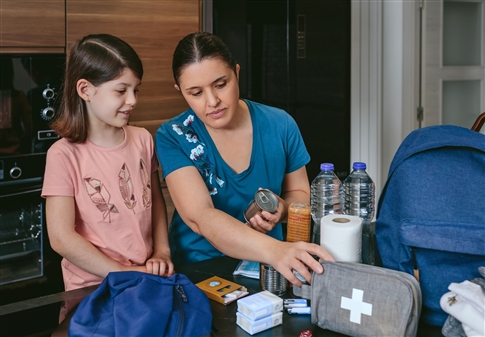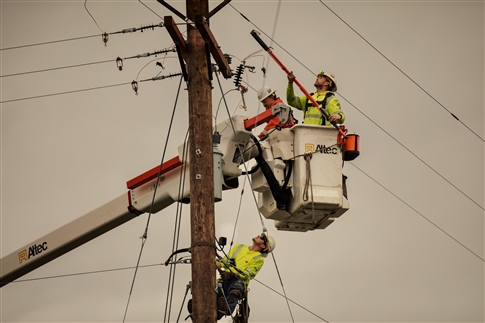Even in historically wet, mild Oregon, summers are getting hotter and drier, with longer wildfire seasons. The overall risk of wildfires is growing across the Northwest.
The increasing frequency of extreme weather events and threat of natural disasters have prompted EWEB to modify operational practices and make strategic investments to mitigate wildfire risk and improve electric system resiliency. A resilient system can adapt, withstand, and recover more quickly from a catastrophic event.
We are currently operating in regular settings.
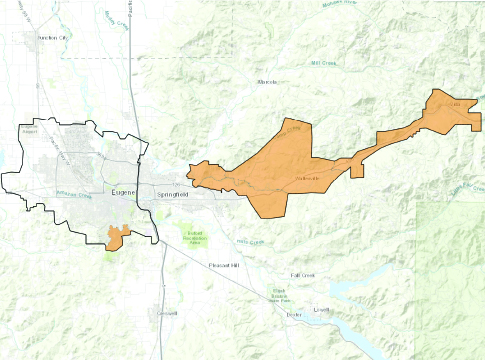
Is EWEB territory at risk?
Most of EWEB’s electric infrastructure is in urban areas with relatively low risk for wildfire. However, long portions of the electric system run adjacent to and across areas with heavy tree canopy, and EWEB serves several thousand customers who live in the wildland-urban interface, which includes portions of the McKenzie River Valley and South Eugene.
This map shows areas within the EWEB service territory where our electric lines and equipment are sited in terrain with a higher potential for wildfire. These areas have been identified as High-Fire-Risk Zones (HFRZs) in our Wildfire Mitigation Plan. Electrical equipment in HFRZs is subject to additional operational safety measures and is prioritized for proactive wildfire mitigation measures.
EWEB’s High Fire Risk Zones are based on a combination of third-party risk modeling analysis and the on-the-ground experience of electric system operators and local fire agency professionals. EWEB will continue to refine and update our risk maps over time.
This HFRZ map focuses mitigation activities and investments on areas with the greatest risk reduction benefits. It shows where EWEB equipment is placed in "wildfire safety settings" mode to lower the chances of utility equipment causing an ignition during wildfire season, as well as where a Public Safety Power Shutoff (PSPS) is most likely to be used during extreme fire conditions, such as Red Flag Warning events. Please use the EWEB Outage Map to view current power outage locations.
All information presented on this map is approximate and subject to change. While we do our best to ensure the quality of the information, EWEB makes no guarantee as to its accuracy, completeness, or timeliness.
View map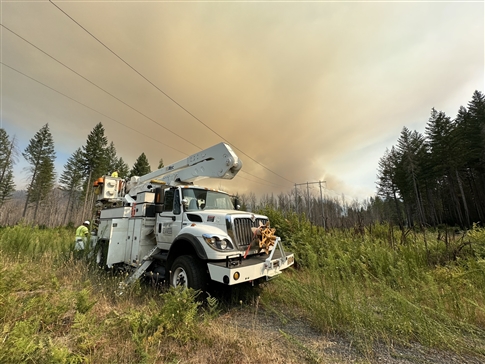
2025 Wildfire Mitigation Plan
EWEB’s Board of Commissioners approved the updated Wildfire Mitigation Plan during the April 1 Board meeting.
The plan is designed to protect public safety, reduce risk to utility customers, and promote electrical system resilience to wildfire damage.
Wildfires threaten EWEB assets, operations, and customers on a near-annual basis. To address this threat, the utility is testing new equipment, leveraging technology, and incorporating third-party expertise to bolster electric system resiliency to a range of threats, including wildfire.
Read more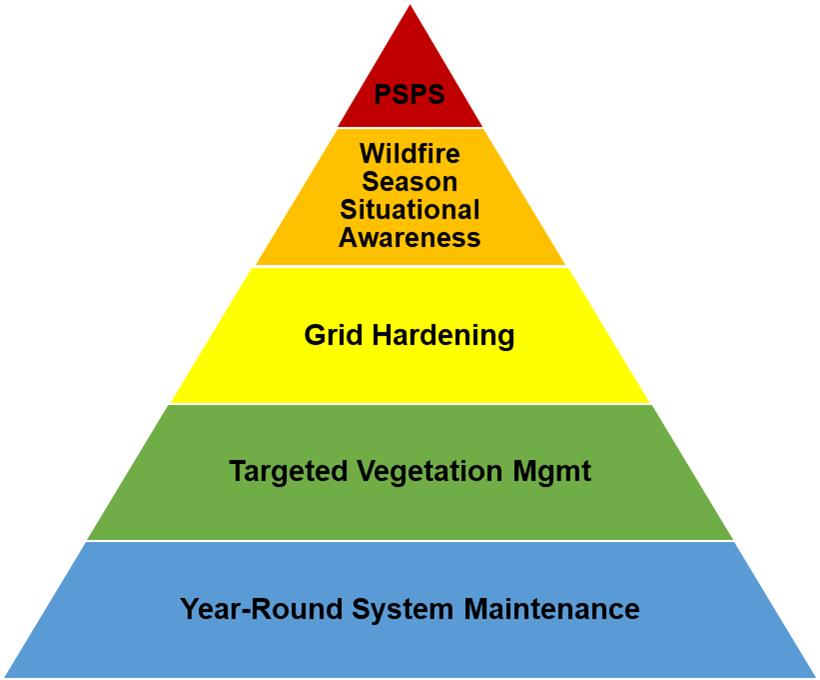
Public Safety Power Shut-off (PSPS)
A Public Safety Power Shutoff (PSPS) is an operational practice an electric utility may use to help prevent wildfires from starting or spreading during extreme and dangerous weather conditions. A PSPS means EWEB will proactively turn power off in high-risk areas until weather conditions improve, and it is considered a last resort action to help protect public safety.
Learn more
Wildfire Preparedness Resources
Humans cause more than 70% of Oregon’s wildfires. We all have a role in mitigating wildfires and being ready to evacuate if necessary. Knowing what to do before, during, and after a wildfire can empower you to take action.
Taking simple steps to prepare today can make a big difference in being ready to respond and keeping yourself, your loved ones, and your community safe.
Learn MoreWhat is EWEB doing to prepare?
We take wildfire risk seriously, and we put the safety of our customers and community first.
Vegetation management
We proactively prune trees, branches, and shrubs to make sure they don't come in contact with power lines during high wind, snow, or ice events. Maintaining clearance between trees and power lines helps reduce this risk. Each year, crews trim around 300 'line miles' of vegetation to minimize the chance of falling trees and branches.
System inspection and maintenance
We conduct routine and proactive maintenance on more than 725 miles of overhead power lines to ensure our system is safe and reliable. We visually patrol and inspect the system and components, and replace worn or aging equipment throughout the system. Like our additional vegetation maintenance, we frequently inspect areas with a higher risk of wildfire.
Proactive grid-hardening investments
We actively seek opportunities to replace older equipment such as power poles, crossarms, and wires. Sometimes, we take specific overhead distribution lines and put them underground. We are also installing more fire-resistant equipment, such as ductile iron instead of wooden poles. Read about the transmission line project in the upper McKenzie Valley.
Situational 'wildfire season' awareness
Situational awareness during fire season includes monitoring weather for high winds and low humidity, modifying field work practices to be more fire aware, bringing fire suppression equipment to every work site, and increased coordination with public safety partners when crews are working in areas with high fuel loads.
Wildfire Safety Settings
When wildfire risks are heightened in the hot, dry summer months, we change the settings on our equipment in South Eugene and the McKenzie Valley. These protective measures include modifying high-voltage electric switches and relays. Like a circuit breaker in your home, the switch senses when trouble occurs, such as a tree branch falling on the line, and shuts off the power. We will not re-energize the line until we visually inspect it and confirm with public safety partners that there is no fire in the area. Consequently, these measures may result in more frequent and prolonged outages.
Related Programs
Together, we prepare. Find information about preparing your household for an emergency.
Need-to-know information during a power event. Find links to our outage map and don't forget to follow us on social media for the latest news.

